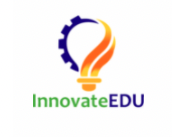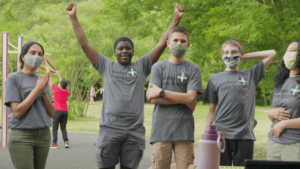Finding Our Common Language
Key Points
-
Prioritize education research, as it has the potential to change the futures of our students.
-
Don’t consider school procurement as separate from the teachers’ experience.

By: Susmita Pratihast
In schools, classrooms, desks, and online learning environments across the country, educators are showing up daily to provide educational experiences for our students. While balancing the challenges of their personal and professional lives, they’re often responsible for creating the lesson plans that our students learn from. So often those throughout the education sector – researchers, providers, educators, and even parents – all have a common question tying them together: What do students need to help them learn?
Education research is at the heart of this question. The push for evidence-based education interventions has been around long before the American Rescue Plan (ARP) Elementary and Secondary School Emergency Relief (ESSER) Fund. Race to the Top, No Child Left Behind, and even way back to Horace Mann, education reform efforts have sought to prioritize resources, tools, and supports that elevate student achievement and lifelong learning. While quality education research is happening across the country, too often the answer is “we don’t actually know”.
Currently, education research and development is happening in a vacuum. With information closed off to educators, they’re not able to fully identify or comprehend the resources and interventions that are available and proven to improve teaching and learning.
While serving as a Data Strategist in Chicago Public Schools, I saw first-hand the impact that a lack of research data had in the classroom. There was plenty of data being collected but was siloed and in an inconsistent format for analysis. Teachers spent hours on analysis and researching teaching practices that may improve the student outcomes in their classroom. In absence of information on what works for whom under what conditions, teachers were making decisions based on incomplete information. To exacerbate the problem further, the procurement system was disconnected from the teaching and learning decisions leading to suboptimal outcomes. In my role, I served to alleviate these issues but the process took much longer due to a lack of systematic access to evidence and knowledge mobilization.
The current education research system is lacking that shared common language, or Blueprint, resulting in our collective inability to understand what works for specific student groups.
Susmita Pratihast
It’s through this journey that I found the BIRD-E project, an initiative developed by InnovateEDU. Designed by a diverse group of education, industry, and research stakeholders, the Blueprint for Inclusive Research and Development in Education (BIRD-E), has created the Blueprint. A framework that outlines key data elements that researchers and educators alike can use to design, research, and analyze data that can be used to compare what works for students in which context and situation, the Blueprint seeks to answer our common question. With a standards-neutral approach, our goal is to modernize education research through a common, research-based data language in order to support the development, scalability, and accessibility of education intervention research.
Today, education is one of the few fields without actionable data. If we look at the healthcare industry, we see a well-oiled industry that is grounded in a framework that ties together cross-sector research. Everyone wants a healthcare plan that reflects their current situation – where there’s pain, a specific disease or ailment, or even trying to maintain a current health status. But in order for a doctor to effectively diagnose an issue and create a healthcare plan that takes into account a patient’s unique physical makeup and lived experience, doctors start with a universal framework. The current education research system is lacking that shared common language, or Blueprint, resulting in our collective inability to understand what works for specific student groups.
The roadmap to healthcare has saved lives. The stakes are equally high when it comes to education – where students’ future success and livelihoods are at stake. As all providers come together to speak a common language and understand a student’s learning journey, and the interventions that make a difference, the Blueprint is there to help.
Susmita Pratihast is the Project Director for BIRD-E.







0 Comments
Leave a Comment
Your email address will not be published. All fields are required.